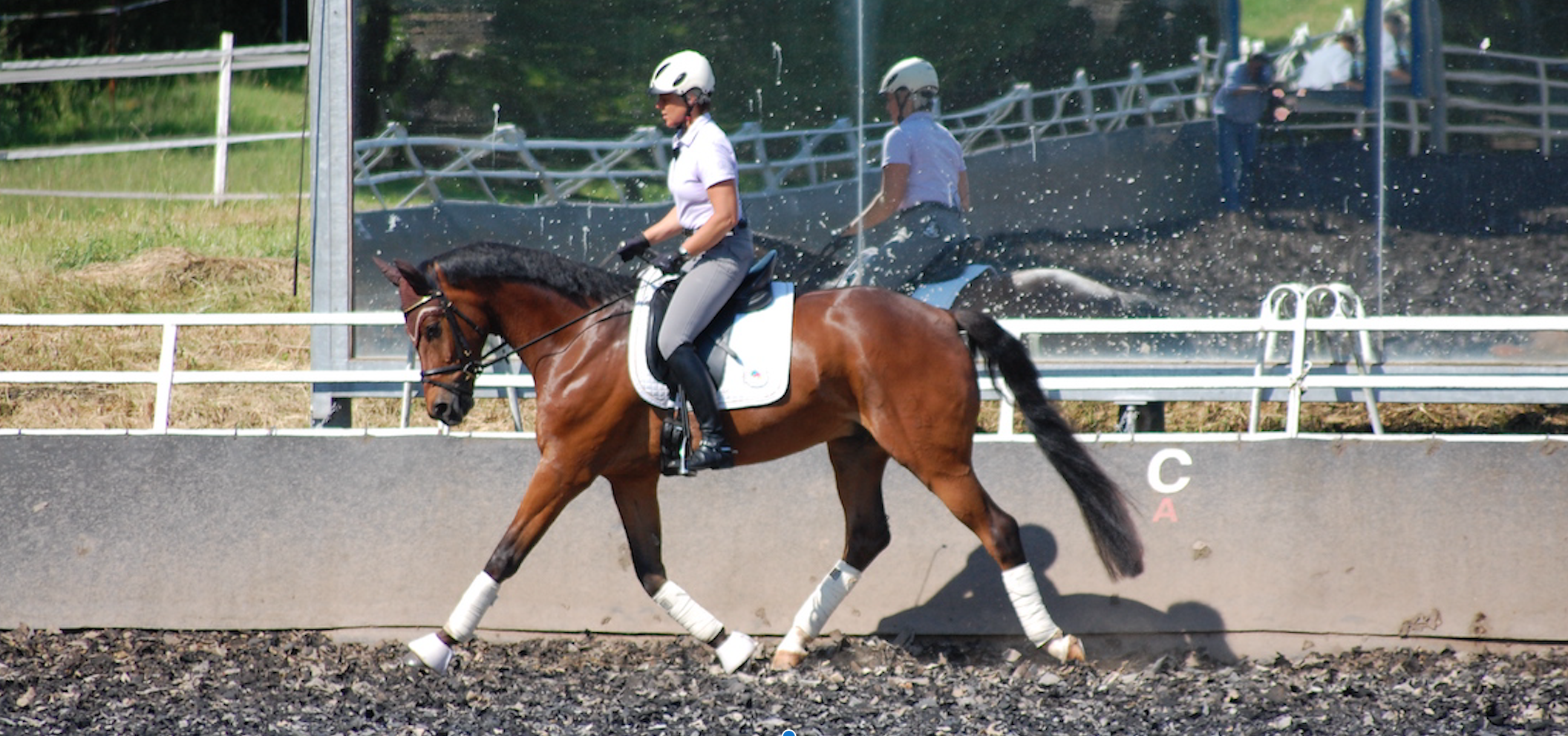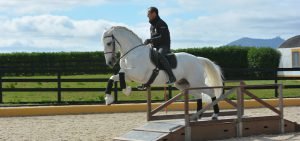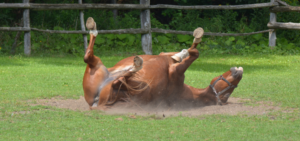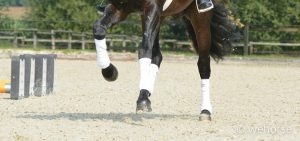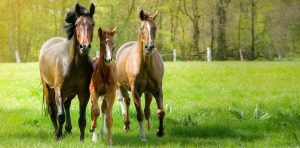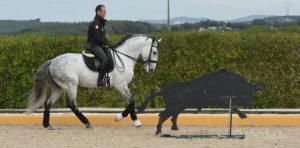Correct impulsion isn’t only meant to look nice in the dressage arena, it’s also a requirement of correct dressage training. In this article you’ll see how correct impulsion looks, how to improve the movement of your horse, as well as 5 rules to keep in mind when developing impulsion.
Summary
What is impulsion?
Impulsion in dressage describes the powerful thrust from the hindquarters that propels the horse forward. However, there is more to it than this. Real impulsion is determined by the horse’s desire to move forward, the elasticity of his steps, the suppleness of his back and the engagement of the hindquarters. In a word, impulsion is controlled, forward energy. Some horses are naturally more energetic than others. Nevertheless, no matter the type or breed of horse, you can enhance impulsion, or ruin it, if you’re unconscious of how it works.
How does it look like?
- The hind legs push actively under the center of gravity of the horse.
- The top line is swinging and relaxed.
- The rider should feel a soft, but steady contact to the bit.
- Ultimately, the horse moves with more expression in each gait.
In dressage, the goal of impulsion is not only for the horse to move more actively but for the movement to be more forward-upward. A horse moving quickly but with only the legs moving has nothing to do with impulsion. For technical movements such as piaffe or passage, real impulsion is necessary in order to be able to carry them out correctly. Dr. Reiner Klimke shows you for example, how to distinguish the so-called “running” medium trot from an expressive and active extended trot. Curved lines such as serpentines can help you develop impulsion.
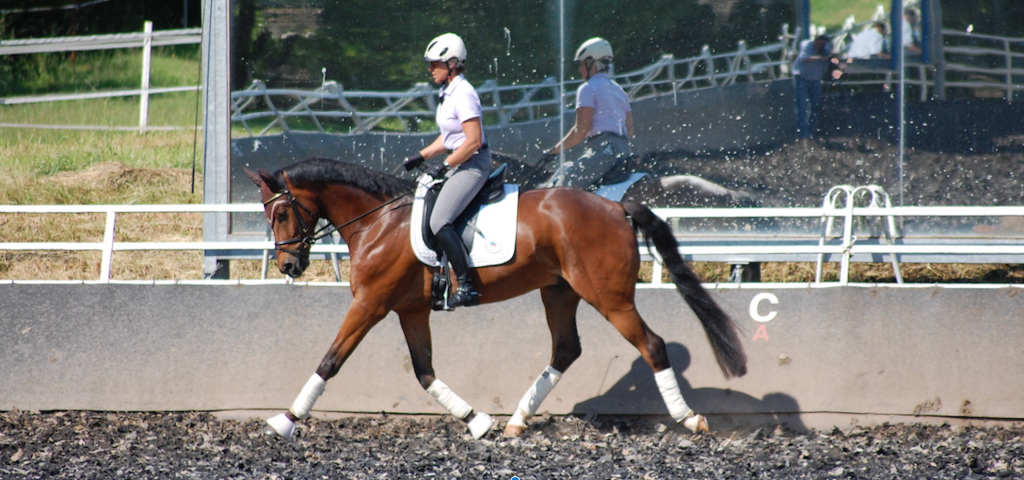
Here are 5 rules to keep in mind while working on the impulsion of the horse:
1 – How to improve impulsion?
Some horses are naturally blessed with impulsion, nevertheless, with correct dressage training, horses that are not so talented in this respect can be improved.
Promoting impulsion starts in the warm-up phase. The horse should be encouraged to move actively whilst keeping a soft contact with the bit. The transitions are helpful for improving self-carriage as well as responsiveness to the riding aids.
To sum up, don’t be discouraged if your horse doesn’t naturally swing over his back, the most important thing is to be able to help him develop expression!
2 – What means forward-upward?
The forward movement is the basis for the development of impulsion in dressage. The horse should be responsive to the driving aids and move forward willingly. Nevertheless, it is not the only thing to pay attention to:
- First: Forward is not only about speed but activity, especially from the hindquarters. Don’t mix impulsion and `running´.
- Second: the movement should also be upwards: your horse should move `uphill´. The weight is shifted to the hind legs and they should step actively under the center of gravity.
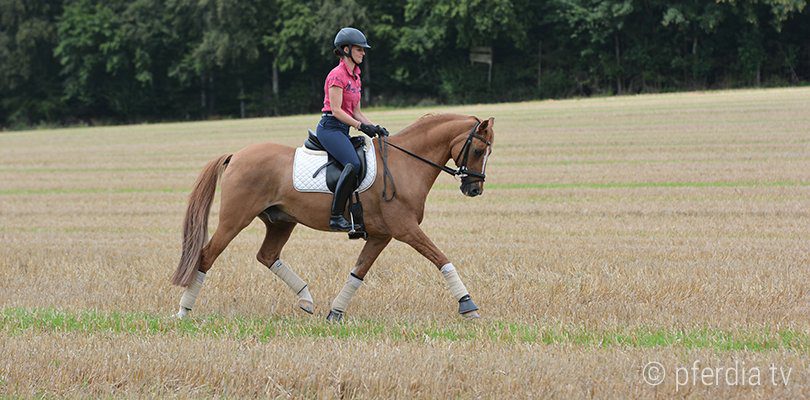
3 – Why is self-carriage so important?
For the active movement to come from the hind legs, over the back and to the bit, it’s important for the majority of the weight to be shifted to the hindquarters, leaving the front end light and free to elevate.
Impulsion can be progressively introduced to the training of young horses. Many exercises such as riding serpentines or tracking up on the circle help activate the hind legs and therefore improve impulsion.
Keep in mind that impulsion can be seen in the moment of suspension: in the gaits, trot and canter, that have a moment of suspension. The more impulsion a horse has, the longer that moment of suspension will be.
4 – How to correctly develop the contact?
A good, correctly ridden extended trot looks effortless and elegant. The horse is in self carriage, there is no need for a stronger contact or excessive leg. Such a picture with impulsion and ease can only arise through the correct foundation and education. The energy can only flow from behind into the hands and the back can only swing, when the horse is through with positive tension in the muscles. This is only possible when a horse is ridden with a soft, consistent contact.
Tempi changes and playing with collection and extension can help developing true dressage impulsion.
Important: This contact is not achieved by shortening the neck and driving the horse into a restricting or strong hand. Exactly the opposite should happen, the horse should seek the hand and allow the energy come through his body, over the back to the riders hand. This can be practised with transitions or lateral movements. You can test this easily: does your horse push up above the contact in transitions? Or become stiff through the back and trots on the forehand? Does he lose balance or fall out over the shoulder during shoulder-in? These are all signs that the hindquarters are not active enough.
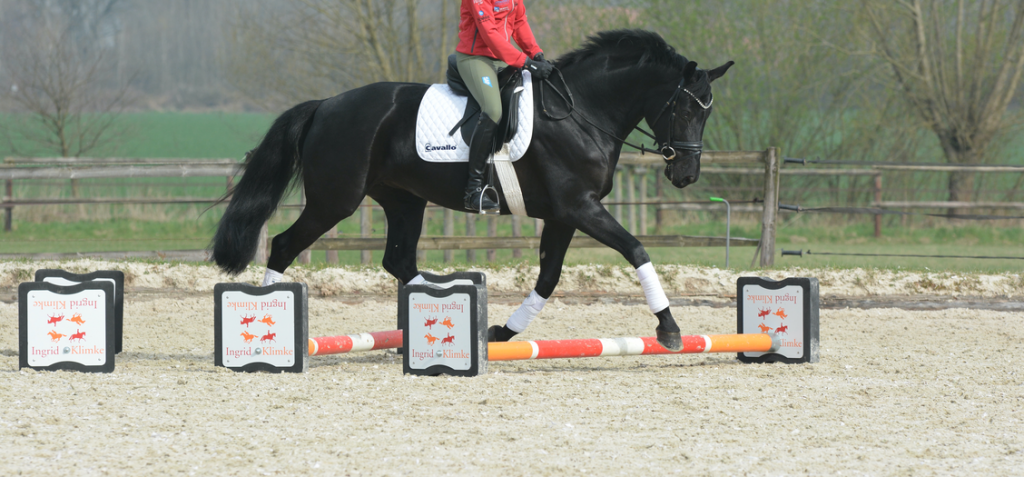
5 – Specific exercises
Impulsion is the result of a good basic education and appropriate daily exercises. Here are some ideas to help you improve:
Ingrid Klimke, using cavalettis, can help your horse improve the cadence within your trot. It will also bring variety into your training!
The movement should swing over the back and through the whole body! It is important for you to be able to ride your horse from the back to the front using fine aids and develop the willingness to go forward as well as self carriage.

